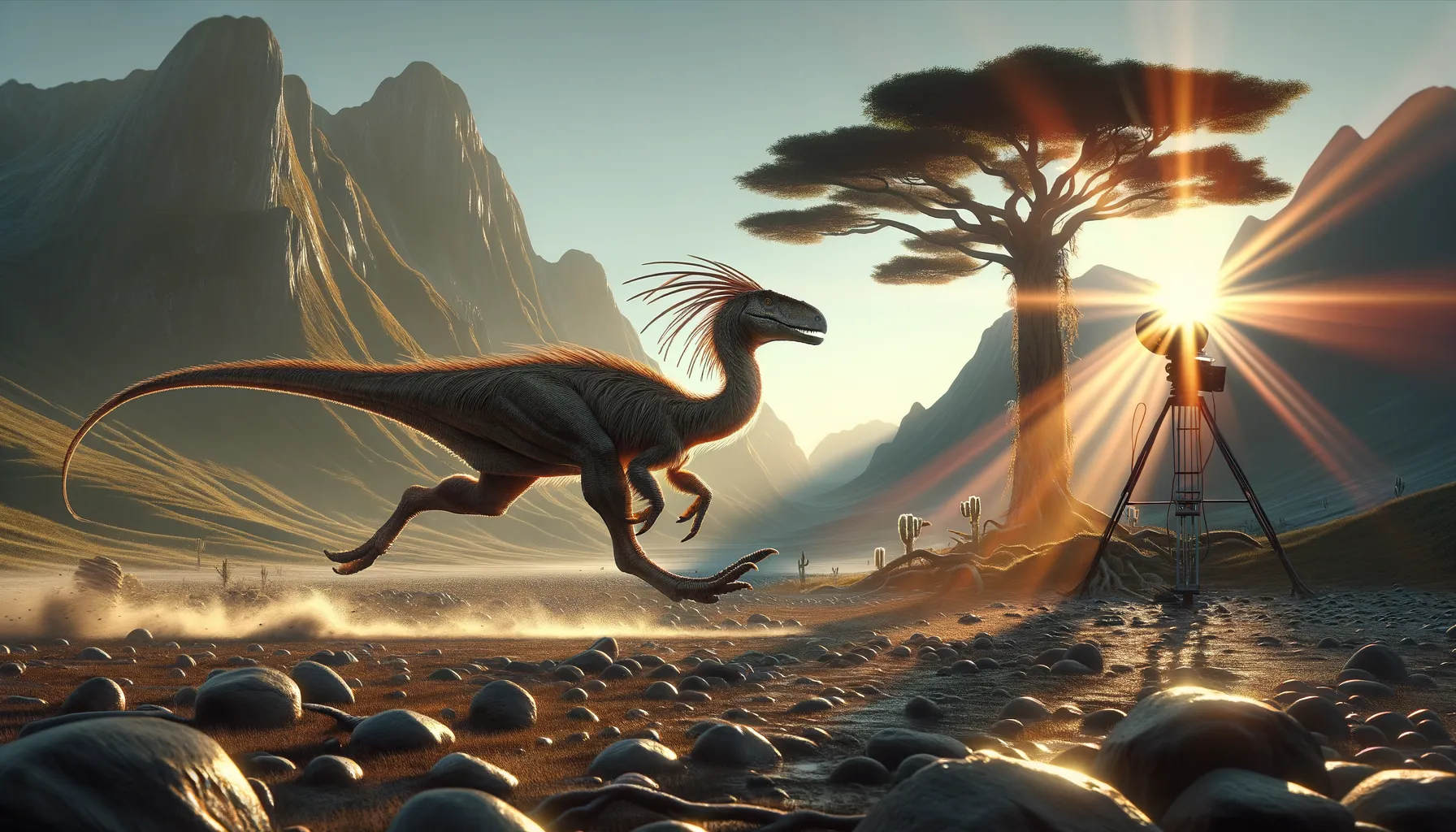
Anserimimus
Swift and nimble, a true speedster of the ages!
Period
Cretaceous
Length
Roughly 3 meters from head to tail.
Height
Around 1.5 meters tall at the hips.
Weight
Approximately 50 kilograms.
Anserimimus was a speedy theropod dinosaur that lived during the Late Cretaceous period. Its name means 'goose mimic,' though its exact diet remains a mystery. Known for its long legs and lightweight build, Anserimimus likely relied on its speed to escape predators and catch prey. Although its fossils have been found predominantly in Mongolia, its agile nature suggests it could adapt to various environments.
Diet
The diet of Anserimimus is not well-known, but it likely included small animals and perhaps insects. Its slender build suggests it might have been an opportunistic feeder, adapting its diet based on availability.
Hunting
Anserimimus might have used its speed to chase down small, fast-moving prey. Being nimble and quick, it likely relied on short bursts of speed rather than sustained chases.
Environmental challenges
Anserimimus faced the challenge of competing with other theropods for food resources. Predators larger than itself might have posed a constant threat, necessitating its swift escape responses. Climate changes could have affected its habitat, impacting prey availability. Additionally, as new predators emerged, maintaining its agility and speed would have been crucial for survival.
Speed
Fast runner with agile legs.
Lifespan
Estimated between 10 to 20 years.
First discovery
First discovered in Mongolia in 1988.
Fun Facts
- Anserimimus was a dinosaur that lived around 70 million years ago during the Late Cretaceous period.
- Its name means 'goose mimic' because its forelimbs resembled the shape of a goose's wings.
- Anserimimus was a relatively small dinosaur, estimated to have been about 10 feet long.
- Unlike many other dinosaurs, Anserimimus did not have teeth and likely fed on soft plants or small animals.
- It was a theropod dinosaur, which means it walked on two legs and was probably quite fast.
- Fossils of Anserimimus have been found in Mongolia, which gives scientists clues about its environment.
- Anserimimus had long arms with large claws, which it might have used for grabbing or digging.
Growth and Development
Anserimimus likely grew rapidly during its early years, reaching near adult size relatively quickly to avoid predation. Its growth patterns would have been adapted to maximize speed and agility. As it matured, slight physical changes allowed refinements in its rapid movements. Its overall development prioritized enhancing its nimbleness and survival tactics.
Habitat
Anserimimus inhabited the semi-arid areas of present-day Mongolia, indicating it was well-adapted to dry, open environments. Its habitat would have consisted of sparse forests and grasslands. It likely moved around to follow food sources and avoid larger predators. The changing climate of the Cretaceous period would have influenced its movement patterns and habitat adaptations.
Interaction with other species
Anserimimus would have lived alongside a variety of other dinosaur species. It likely avoided direct confrontations with larger theropods and focused on evasion. Perhaps competing for food with other similar-sized dinosaurs, it would have had to be strategic in its interactions. Being a small theropod, it probably had few direct predators if it used its speed wisely.
Natural lifespan
Anserimimus lived up to 20 years in the wild.
Reproduction
As a theropod, Anserimimus likely laid eggs. Nests would have been built in safe locations, possibly hidden in vegetation. Parental care might have been minimal, with the young needing to fend for themselves early on. Solitary or paired nesting could have been a strategy to ensure offspring survival.
Social behaviour
Anserimimus may have been a solitary creature, relying on its speed to navigate its environment. However, during mating seasons, it might have engaged in temporary social interactions. Any grouping would have been for specific purposes, such as reproduction or avoiding predators. Communal behaviors would have been limited to necessary interactions.
Fossil locations
Fossils of Anserimimus have primarily been discovered in Mongolia, providing insight into its geographical range. The Gobi Desert's Nemegt Formation is a notable site where several specimens have been found. These locations have helped paleontologists understand its living conditions better. Excavations in these regions continue to uncover significant findings.
